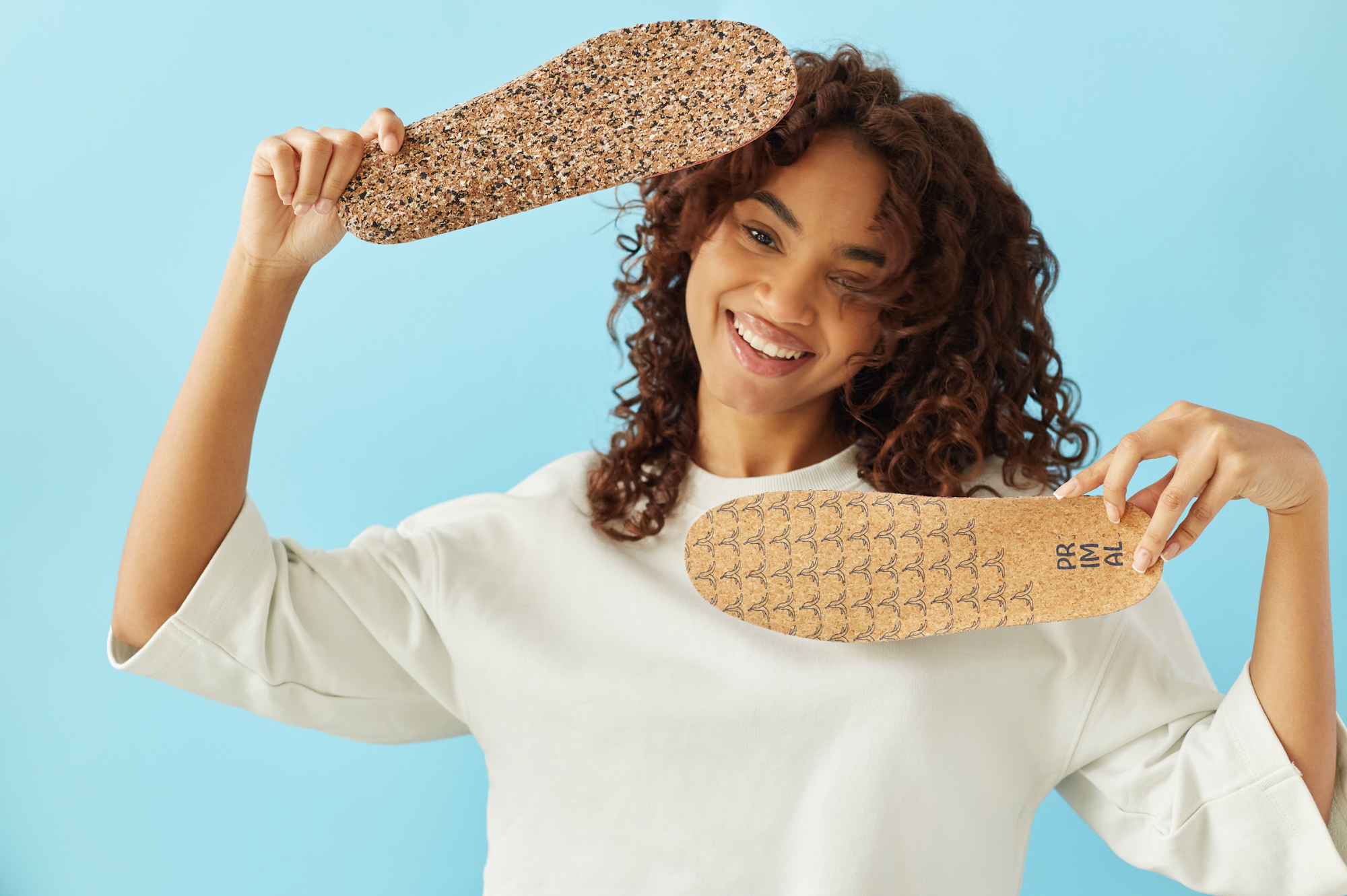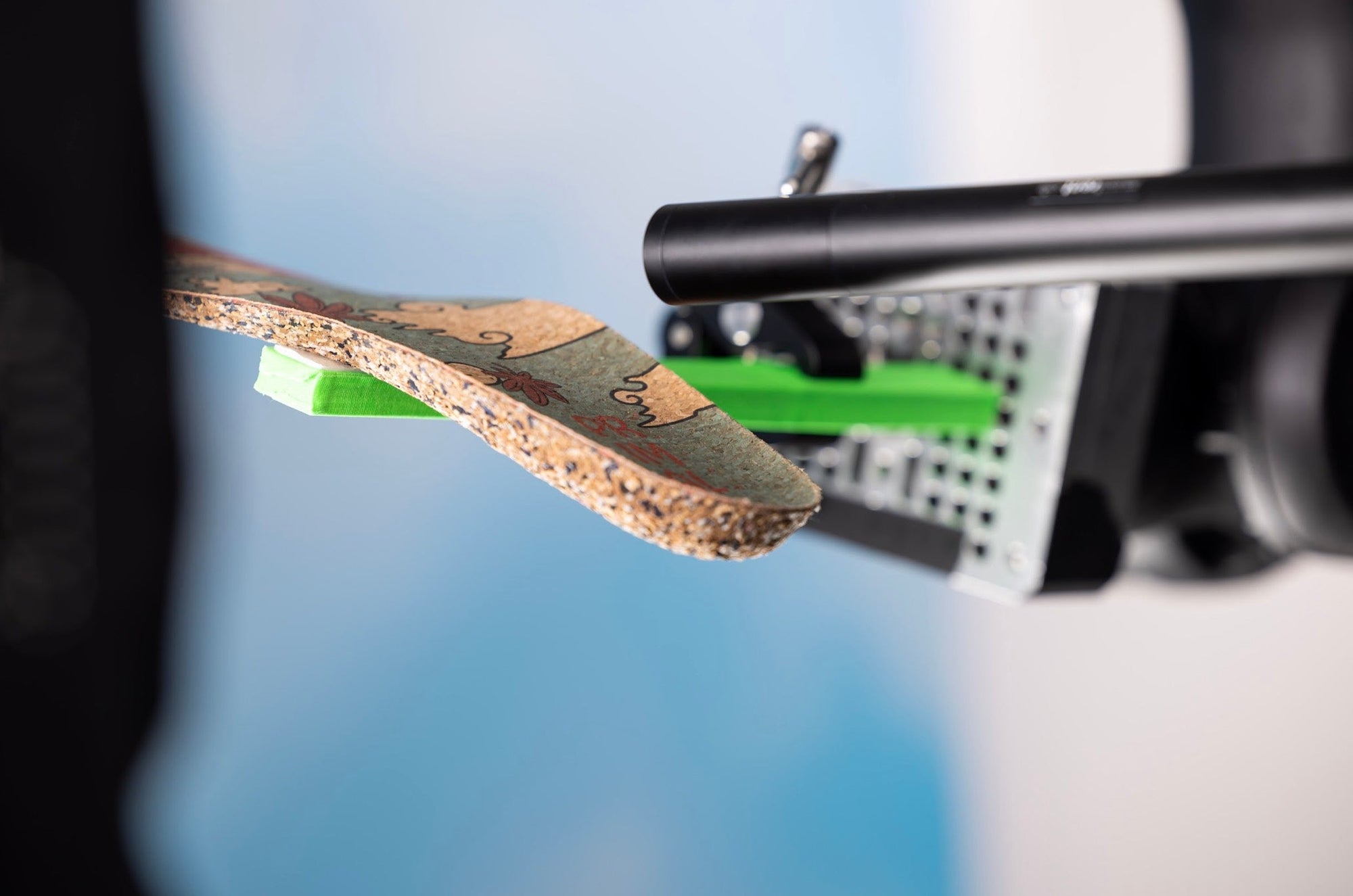Sustainable shoe inserts, such as cork insoles, are slowly gaining popularity. As we come face to face with the realities of creating an environment that makes it difficult for us to thrive, more and more people are taking responsibility for the impact they have. More than ever, people are switching to renewable energy, buying circular products and supporting green businesses. But especially with shoe inserts, keeping the same level of comfort is of the utmost importance. Luckily, it’s easy to experience a higher level of comfort with nature-based products than wasteful alternatives. But what are the main benefits of switching to sustainable shoe inserts?
Well, that’s what we’ll be talking about in today’s blog. The three main questions that arise when people consider eco-friendly insoles, are how they reduce environmental impact, whether they really are healthier and if they are as comfortable as synthetic insoles. So without further ado, let’s dive into these questions, so you can figure out if sustainable shoe insoles are the right choice for you.
How do eco-friendly shoe inserts reduce environmental impact?
Sustainable shoe inserts are made with a strong emphasis on using eco-friendly materials, which sets them apart from conventional inserts. These inserts are designed to minimize their environmental impact throughout their lifecycle, from production to disposal. They often use recycled materials, such as recycled foam or fabrics. These materials are reclaimed from post-consumer or post-industrial waste, diverting them from landfills and reducing the demand for new resources.
Some sustainable shoe inserts are made from biodegradable materials that break down naturally over time, minimizing their impact on the environment. These materials are designed to decompose without leaving harmful residues behind. This can take the form of biodegradable foam or latex, though higher–quality brands usually go all the way by using natural renewable materials such as cork. The inserts are then assembled using eco-friendly adhesives with low volatile organic compound (VOC) emissions. This reduces the release of harmful chemicals into the environment.
Eco-friendly dyes and colorants are frequently used to minimize the use of toxic chemicals and reduce water pollution during the coloring process. And when the shoe inserts are finished, they are shipped and recycled in an environmentally friendly way, minimizing the strain on the planet.
By optimizing the entire value chain to be more sustainable, sustainable insole brands redefine what it means to show care for the planet and its inhabitants. And by being conscious of the brands you support, you too can help shape a better future for the earth.
Are sustainable shoe inserts healthier?
So, even though they’re healthier for the planet, are sustainable insoles healthier for us? The answer is yes. But why? Well, there are a few reasons. Firstly, eco-friendly insoles are made without the harmful chemicals or toxins you can find in conventional shoe inserts. By using natural and eco-friendly materials, sustainable inserts don’t expose your feet to potentially harmful substances. This is twice as important if you suffer from sensitivities or allergies, as they get rid of the discomfort and adverse reactions caused by harmful materials found in conventional inserts.
Sustainable shoe inserts also make the air fresher. As we mentioned earlier, normal conventional inserts release VOC emissions into the air. But sustainable inserts are designed to minimize or eliminate the release of VOCs. This reduction creates a healthier indoor environment by reducing the respiratory irritants and pollutants that can negatively impact your health.
For individuals with sensitivities or allergies to specific materials commonly found in conventional shoe inserts, sustainable options provide relief. By utilizing hypoallergenic and natural materials, sustainable inserts minimize the risk of triggering allergic reactions or skin sensitivities. This allows individuals to enjoy the benefits of comfortable and supportive shoe inserts without compromising their foot health.
The ability of sustainable shoe inserts to reduce foot pain has also been well documented. Cork, the most sustainable insole material, is supportive while remaining flexible. It also creates an antimicrobial environment, so nasty fungi and bacteria can’t thrive in your shoes.
So, sustainable shoe inserts offer healthier options for our feet by being free from harmful chemicals or toxins, improving indoor air quality by reducing VOC emissions, and providing relief for individuals with sensitivities or allergies. And on top of that, they reduce foot pain! What’s not to love?
Are natural shoe inserts more comfortable?
Some people are surprised to learn that eco-friendly insoles not only match the comfort of conventional insoles. They even surpass it. But natural materials, like cork, have an unrivaled ability to give your body what it needs. For instance, people who suffer from flat feet have reported incredible results with cork insoles.
That’s because sustainable shoe inserts are designed with ergonomics in mind, giving you top-of-the-line comfort. That’s valuable even if you don’t suffer from flat feet. These inserts often use materials like cork, with a honeycomb structure that adapts to the foot, while keeping it supported. This reduces pressure points and makes walking fun again.
Cork is also naturally moisture-wicking, which means that it can absorb and release moisture effectively. This helps to keep your feet dry and comfortable by preventing the buildup of sweat and reducing the risk of odors. The breathability of cork also allows for better airflow, promoting a cooler and fresher environment for the feet.
Sustainable shoe inserts are most well known for their excellent shock-absorbing capabilities. They can effectively absorb the impact of each step you take, so your feet, ankles, and joints feel less strained. The result is less discomfort and fatigue, which makes cork insoles particularly beneficial if you suffer from foot conditions or if you spend long hours on your feet.
So the answer is “Yes”. Sustainable shoe inserts are more comfortable than conventional insoles. They keep your feet supported and moisture free, and absorb the shocks, so your body doesn’t have to. Because your feet deserve the comfort and support that only natural materials can give.
Conclusion
Change can be daunting. But every so often we need to change what we’re used to, so we can achieve the future we want. Switching from conventional insoles to sustainable shoe inserts is, quite literally, a step in the right direction.
At Primal Soles, we make cork insoles that give you nature-based support. We make the only 100% recyclable cork insoles in the market in accordance with EU regulations. The entire production process is CO2 negative. And we have a program in place that makes recycling them effortless for you. Because over time and after lots of exploring, your insoles will wear out. But we’ll always be there, at the end of the path, to give your feet the support they deserve.
So, why not try Primal Soles. We make insoles for flat feet and insoles for high arches. Or try our brand-new line, with a design based entirely off the feedback of thousands of users— Primal Clouds. And when you insert them into your shoes, you’ll experience how it feels to walk on clouds.
Let nature support you. And support nature back.
By Sanjay Ghosh


